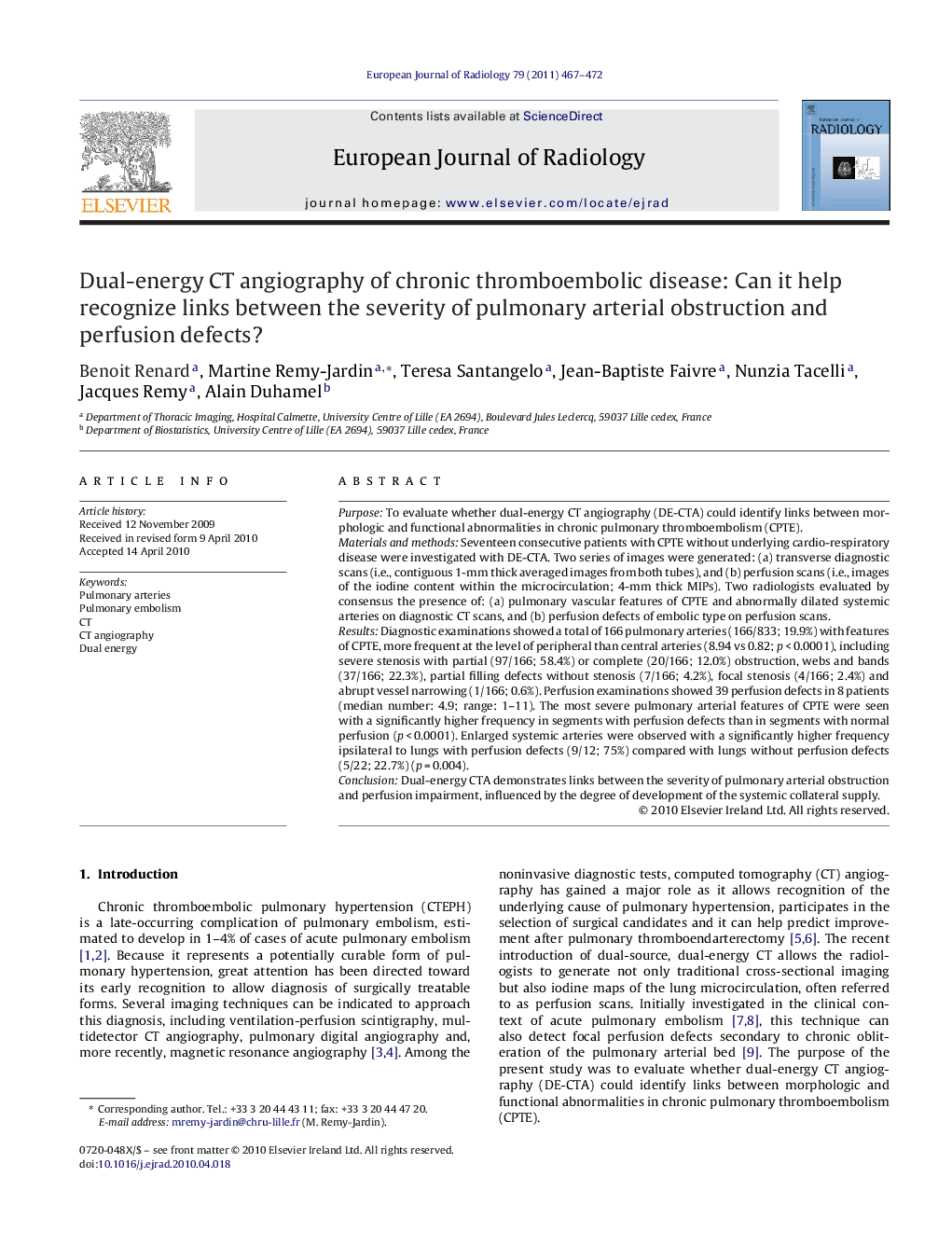| کد مقاله | کد نشریه | سال انتشار | مقاله انگلیسی | نسخه تمام متن |
|---|---|---|---|---|
| 4226388 | 1609799 | 2011 | 6 صفحه PDF | دانلود رایگان |

PurposeTo evaluate whether dual-energy CT angiography (DE-CTA) could identify links between morphologic and functional abnormalities in chronic pulmonary thromboembolism (CPTE).Materials and methodsSeventeen consecutive patients with CPTE without underlying cardio-respiratory disease were investigated with DE-CTA. Two series of images were generated: (a) transverse diagnostic scans (i.e., contiguous 1-mm thick averaged images from both tubes), and (b) perfusion scans (i.e., images of the iodine content within the microcirculation; 4-mm thick MIPs). Two radiologists evaluated by consensus the presence of: (a) pulmonary vascular features of CPTE and abnormally dilated systemic arteries on diagnostic CT scans, and (b) perfusion defects of embolic type on perfusion scans.ResultsDiagnostic examinations showed a total of 166 pulmonary arteries (166/833; 19.9%) with features of CPTE, more frequent at the level of peripheral than central arteries (8.94 vs 0.82; p < 0.0001), including severe stenosis with partial (97/166; 58.4%) or complete (20/166; 12.0%) obstruction, webs and bands (37/166; 22.3%), partial filling defects without stenosis (7/166; 4.2%), focal stenosis (4/166; 2.4%) and abrupt vessel narrowing (1/166; 0.6%). Perfusion examinations showed 39 perfusion defects in 8 patients (median number: 4.9; range: 1–11). The most severe pulmonary arterial features of CPTE were seen with a significantly higher frequency in segments with perfusion defects than in segments with normal perfusion (p < 0.0001). Enlarged systemic arteries were observed with a significantly higher frequency ipsilateral to lungs with perfusion defects (9/12; 75%) compared with lungs without perfusion defects (5/22; 22.7%) (p = 0.004).ConclusionDual-energy CTA demonstrates links between the severity of pulmonary arterial obstruction and perfusion impairment, influenced by the degree of development of the systemic collateral supply.
Journal: European Journal of Radiology - Volume 79, Issue 3, September 2011, Pages 467–472